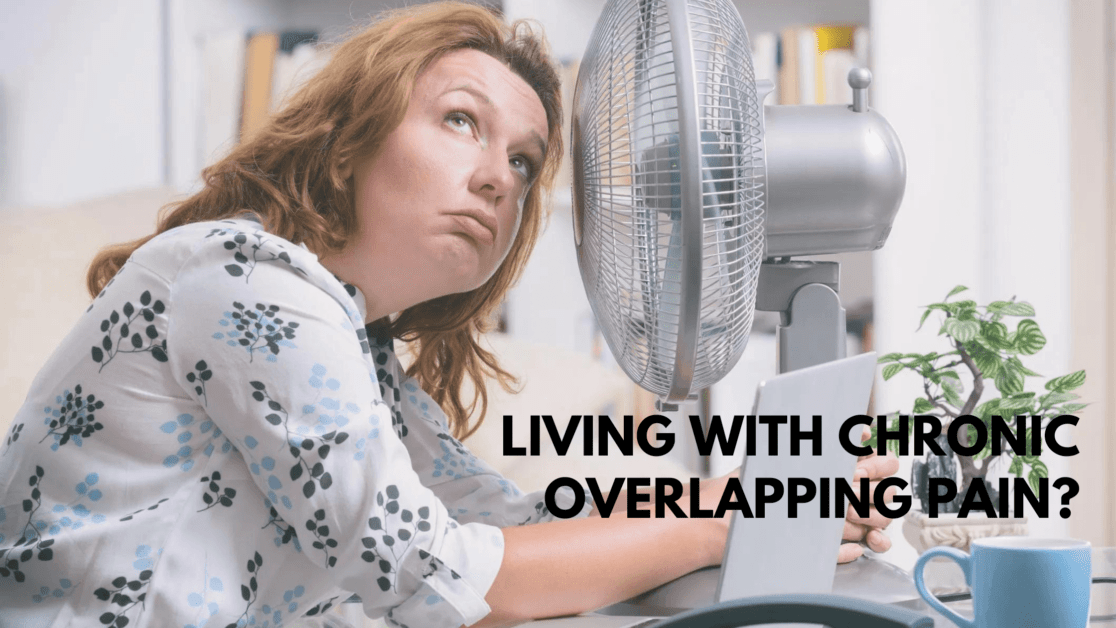Living With Chronic Overlapping Pain Conditions (COPC)

Pain is easier for us to understand when we can see it, but it is actually so much more than that. The pain usually comes from the mental or psychological side via anxiety, depression, loneliness, loss, bullying, or the physical side from an injury. However, may it be chronic pain, chronic illness, or chronic fatigue, how we arrive at these ailments is completely different from any kind of mental or physical pain.
What Are The Different Types Of COPC?
Chronic overlapping pain conditions refer to a cluster of chronic pain conditions that frequently co-occur. There are mainly ten types of conditions, including –

- Endometriosis
- Fibromyalgia
- Painful bladder syndrome (Interstitial Cystitis)
- Irritable bowel syndrome (IBS)
- Chronic lower back pain
- Headaches caused by migraine
- Chronic headaches from tension
- Vulvodynia
- Chronic fatigue syndrome (Myalgic Encephalomyelitis)
- Temporomandibular disorder (TMD)
In general, these are chronic pain conditions that can affect either the local part of the body or widespread pain like fibromyalgia. It is presumed that there are common underlying biological mechanisms that lead to any one of these conditions. Once a patient has one of these conditions, it becomes more common that they can develop another condition. Then, over the course of their life these patients often suffer from multiple conditions at one time or a series of conditions over time where as soon as one condition gets better, another comes on.
Chronic overlapping pain conditions occur more commonly in women than they do in men, sometimes up to two times more commonly in women than men. Some of the conditions within this group of overlapping conditions only affect women, like endometriosis and vulvodynia. One of the most common themes that are observed in patients with these conditions is that there is an alteration in the way the central nervous system processes painful stimulations. These patients are sort of becoming hypersensitive to both pains as well as other sensory stimuli. They tend to be more sensitive to light and sound as well. These patients also tend to suffer a lot from fatigue, poor sleep, or mood disorders like anxiety, distress, and depression.
?Why they occur:
What exactly leads to chronic overlapping pain conditions, doctors don’t entirely know and there are multiple pathways in which a patient can develop these conditions. What we know is that there are genetic vulnerabilities or trauma which can increase the likelihood of developing it, whether it is an early life trauma or a repetitive one throughout life. These pain symptoms are often triggered by stresses in life and once you develop one, you are more likely to develop others over time as well.
?How to detect and diagnose :
One of the most common symptoms of COPC is chronic pelvic pain. It is defined as any type of persistent recurrent pain that is in the pelvis. Other common conditions include various gynecologic pains, mainly endometriosis. But there are a lot of other conditions within the field of gynecology that can cause chronic pelvic pain, these include irritable bowel syndrome as well as painful bladder syndrome.
Another one of the most common but underdiagnosed conditions is musculoskeletal pain, diagnostically referred to as pelvic floor myalgia. However, it can also include musculoskeletal pain in the abdominal wall, the low lumbar area, and the pelvic region, so these conditions often commonly overlap.
Painful bladder syndrome is a condition in which patients not only report pelvic pain but also often experience urinary urgency and a frequent sensation that they have to urinate all of the time. Even if they empty their bladder, they still feel the urge to go. These patients generally need to exclude other problems like kidney stones, bladder cancer, or infections. Once you exclude these other types of inflammatory causes or neoplasia, the diagnosis gets made entirely by symptomatology.
Irritable bowel syndrome is one of the many different functional bowel disorders that is characterized by abdominal pain. There is also some type of change in the bowel function, either pain with bowel movements or a change in the frequency and consistency of the bowel function.

Again, like many of these chronic pain conditions, we need to make sure that we’re not missing another problem like cancer or inflammatory bowel disease like ulcerative colitis. As soon as these conditions are excluded, pain while squatting down and the functional change in the patient’s bowel habits help in making the diagnosis of irritable bowel syndrome.
Many of these conditions are diagnosed almost entirely based on symptoms and excluding other pathology, so having a high suspicion based on symptoms is often what doctors look for.
For example, the cardinal symptom of endometriosis is having painful periods, women often also describe daily pelvic pain. So, they have pain all of the time, but their pain worsens before or during their periods. Another cardinal symptom is that these women often suffer from experiencing significant and severe pain with vaginal intercourse.
Women often have many other symptoms like abdominal bloating, discomfort, pain with urination or during bowel movements. Unfortunately, currently, the only way that we can diagnose endometriosis is by surgery. Even when there are a lot of examined findings as well as imaging findings that point to a high suspicion of endometriosis, these are the primary ways to diagnose it and if you want to get rid of it definitively then you must undergo surgery.
Moreover, most of these symptoms can also affect men. Chronic overlapping pain conditions can happen to anyone, irrespective of gender or any other classification. Although women are prone to have all of the symptoms given above, it is given that most of the symptomatology can be applied in the cases of male patients as well.
Conclusion
Last but never least, a healthy diet and healthy life choices can help immensely in mitigating the painful existence of COPC. Some freehand exercises are also recommended if you have the ability to move your body. Keep in touch with your physical care provider on a regular basis. Have faith in yourself, you can overcome it.
Sandra_Obrien
View All By Sandra






